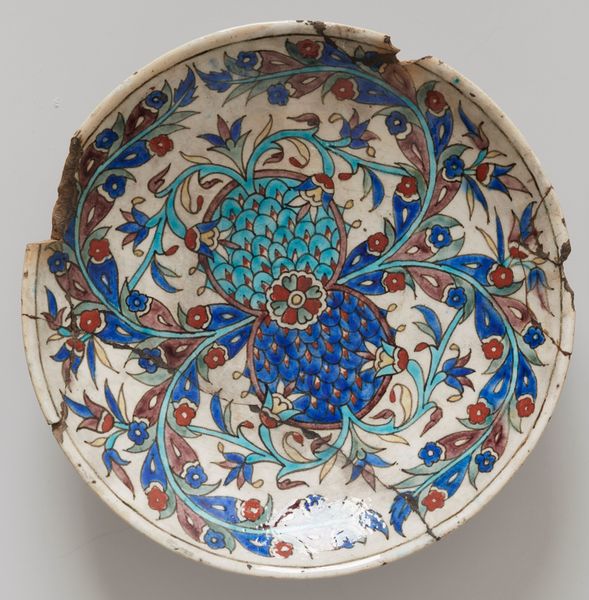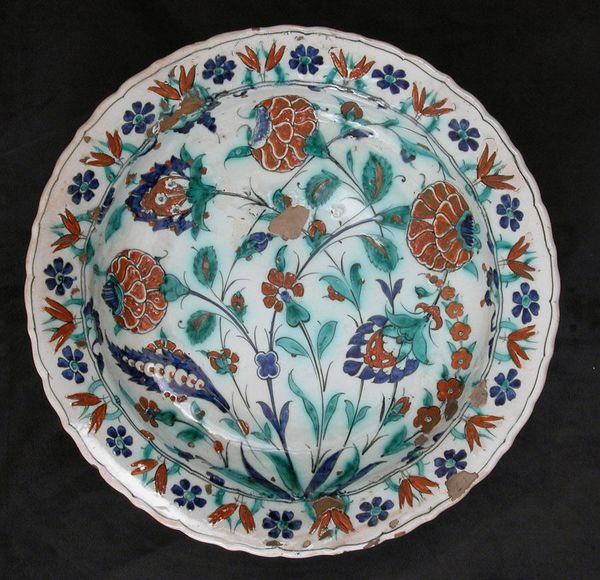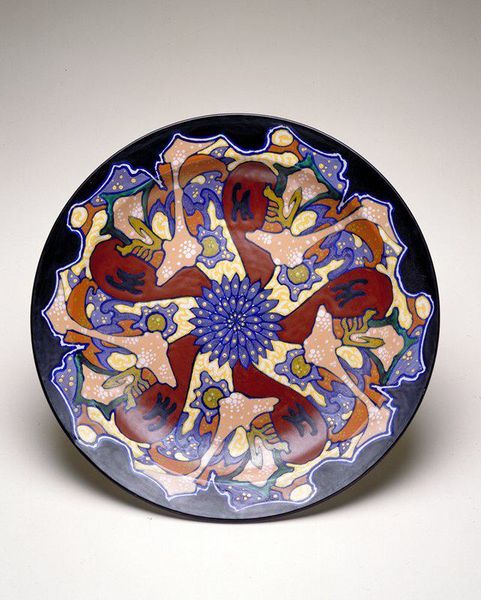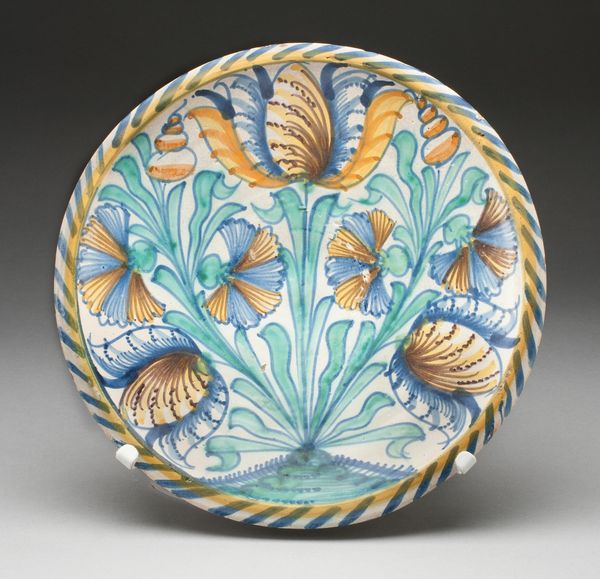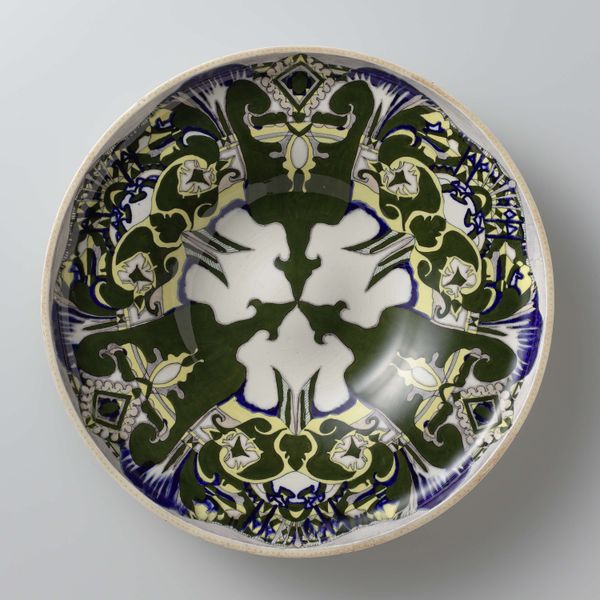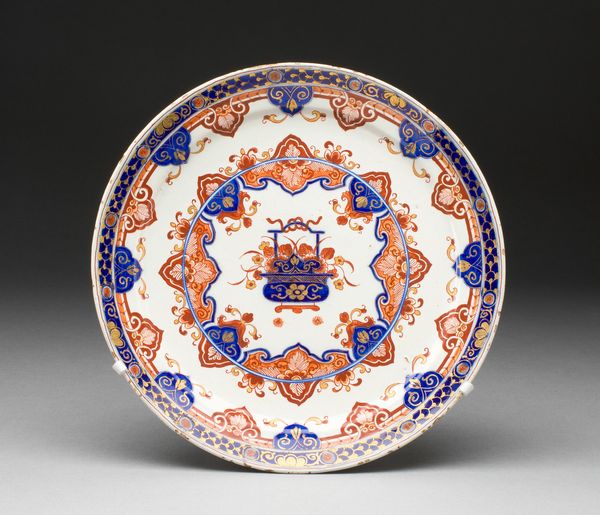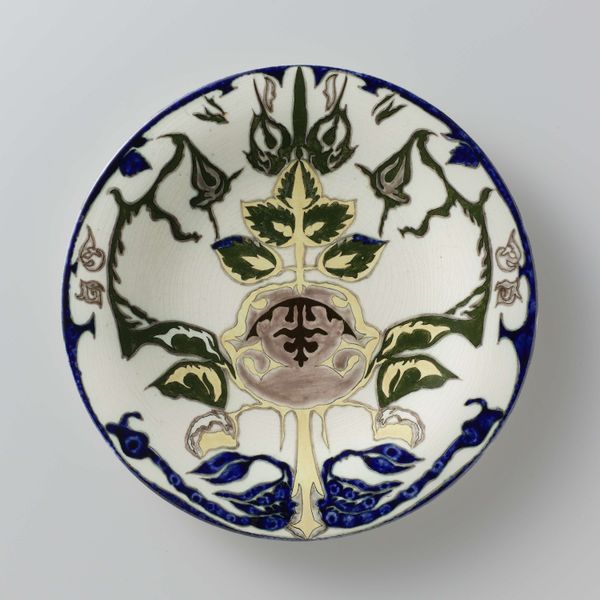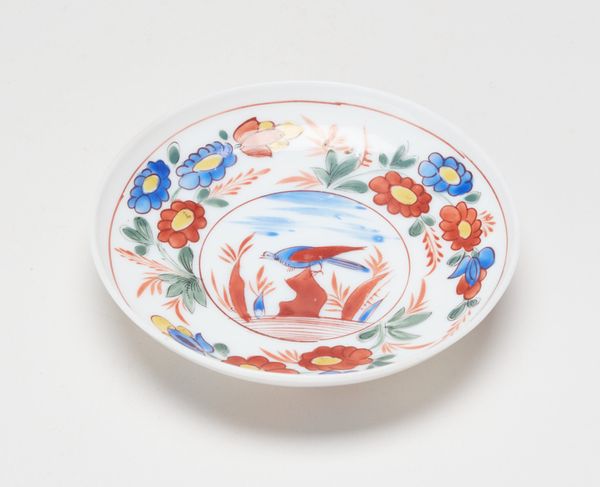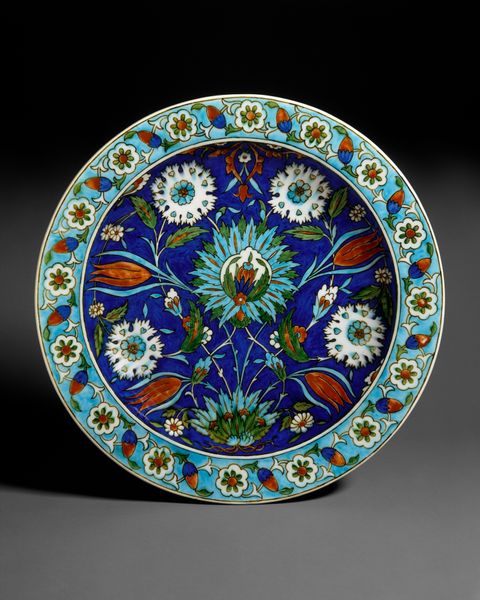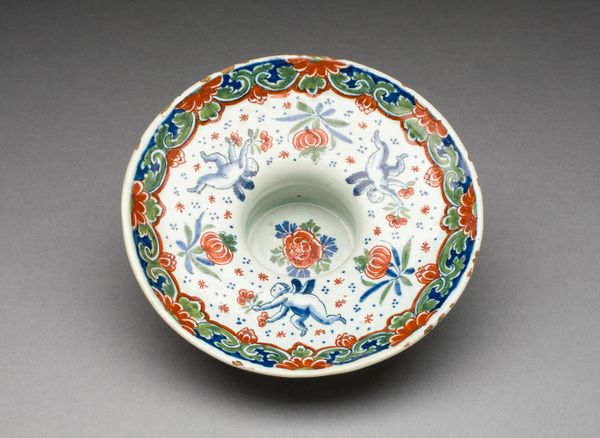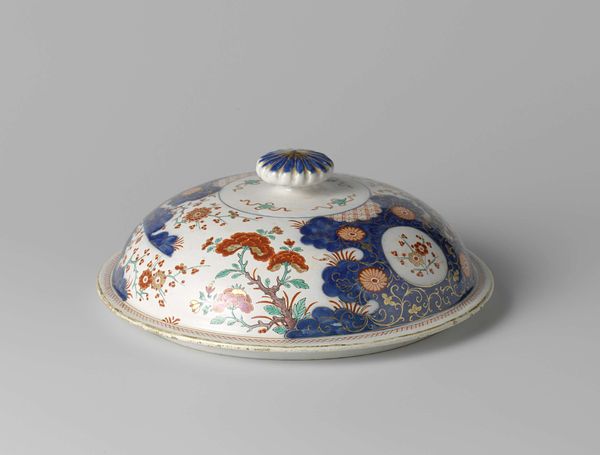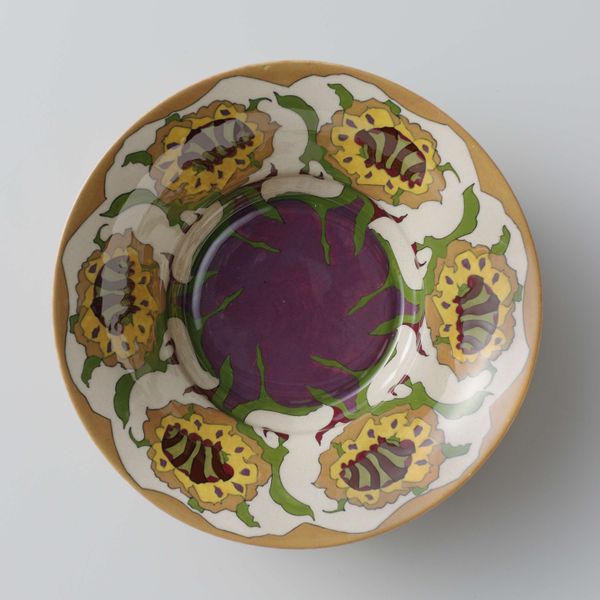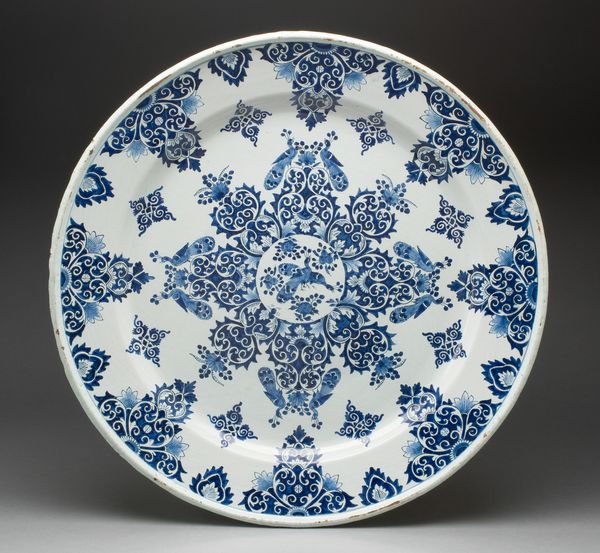
ceramic, earthenware
#
dutch-golden-age
#
ceramic
#
earthenware
#
ceramic
#
earthenware
#
decorative-art
Dimensions: height 31.5 cm, width 25.5 cm, depth 5.2 cm
Copyright: Rijks Museum: Open Domain
Curator: Here we have a piece titled "schaal met bliksemmotief", which translates to "dish with lightning motif." Created around 1720-1740, it’s currently held at the Rijksmuseum. The dish, rendered in earthenware and ceramic, showcases a classic style from the Dutch Golden Age. Editor: My goodness, it's lively, isn't it? The colors, that peculiar zigzag border… it feels both formal and strangely energetic. Like a formal garden struck by a wayward lightning bolt. I adore that tension. Curator: The 'lightning motif,' while perhaps appearing merely decorative, could resonate with deeper symbolic meanings for the time. Lightning was often associated with divine power or sudden change, but in a domestic object such as this dish, its symbolism becomes delightfully ambiguous. Editor: I see it. That visual discord adds such playful energy to what would otherwise be a rather predictable floral arrangement. The hand-painted flowers almost feel defiant, like they're growing against the grain. Do you think the artist was intentionally playing with the established conventions? Curator: That’s certainly plausible. Delftware, of which this is a striking example, was known for borrowing and adapting motifs from various cultures and periods. The "lightning," if we interpret it that way, might be a deliberate nod to exotic designs from further east or an ironic counterpoint to more common Western themes of nature and still life. Editor: Right, I also see these medallion forms at the edges—they look vaguely Persian-inspired. It feels like the artisan was working to reflect a world growing in broader interconnectedness…or perhaps they simply thought the motifs looked stunning together! Curator: Both notions could coexist quite easily! Decorative arts often hold within them reflections of social currents, trade routes, and the whims of artistic fashion all interwoven. Editor: Thinking about where something like this would be placed in a home back then adds to the fun. Maybe set on a side table in a drawing room, an artful bit of flair that just might set off an interesting discussion for the visitors…I like to think so, anyway. Curator: Indeed. Appreciating an object like this involves connecting to both the grand narratives of its era and the intimate spaces it inhabited. Editor: Well, I'll certainly see Delftware in a slightly electrified new light from now on. Thank you for that!
Comments
No comments
Be the first to comment and join the conversation on the ultimate creative platform.
